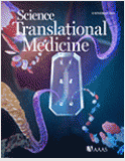 Deciphering the mechanisms that govern skeletal muscle plasticity is essential to understanding its pathophysiological processes, including age-related sarcopenia, which results in a progressive, generalized loss of muscle mass, strength, and quality. The consequences are numerous: increased risk of falls, length of stay in hospital, infectious risks …
Deciphering the mechanisms that govern skeletal muscle plasticity is essential to understanding its pathophysiological processes, including age-related sarcopenia, which results in a progressive, generalized loss of muscle mass, strength, and quality. The consequences are numerous: increased risk of falls, length of stay in hospital, infectious risks …
The CaV1.1 voltage-gated calcium channel plays a central role in excitation-contraction coupling (ECC), which increases the possibility that it may also initiate the adaptive response to changes during muscle activity. Here, researchers from France Piétri-Rouxel’s team at the Myology Research Centre have revealed the existence of a CaV1.1 (CaVβ1) β subunit gene transcription switch that depends on the state of innervation of the muscle in mice.
In a mouse model of sciatic denervation, the researchers showed an increased expression of an embryonic isoform of the subunit called CaVβ1E. CaVβ1E stimulates downstream growth differentiation factor (GDF5) signaling to counter denervation muscle loss in mice. The authors further reported that the aged mouse muscle expressed a lower amount of CaVβ1E compared to the young muscle, displaying a response to the modified GDF5-dependent denervation. Conversely, overexpression of CaVβ1E improved mass loss in aging muscle in mice by increasing expression of GDF5.
The researchers also identified the human CaVβ1E analog and showed a correlation between the expression of CaVβ1E in human muscles and the decline in age-related muscle mass. These results suggest that strategies targeting CaVβ1E or GDF5 may be effective in reducing muscle loss during aging.
